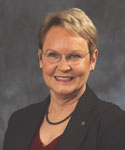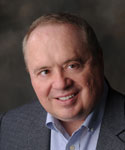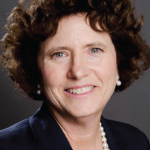 For the first time, five generations are currently employed in the workforce. (Editor’s note: The exact years of demarcation vary slightly by source, and there is certainly some overlap.) In research and clinical practice, rheumatologists need to be able to communicate with colleagues despite any generational difference or misunderstandings that may exist. It’s important to realize that each generation has its own unique characteristics and ways of communicating with one another, and with both the older and younger generations.
For the first time, five generations are currently employed in the workforce. (Editor’s note: The exact years of demarcation vary slightly by source, and there is certainly some overlap.) In research and clinical practice, rheumatologists need to be able to communicate with colleagues despite any generational difference or misunderstandings that may exist. It’s important to realize that each generation has its own unique characteristics and ways of communicating with one another, and with both the older and younger generations.
Traditionalists
Also known as the silent generation, traditionalists are individuals who were born before 1946. They generally keep their thoughts to themselves and only speak when spoken to. Therefore, a one-on-one communication approach works well with this generation, says Billie Blair, PhD, president/CEO, Change Strategists Inc. in Los Angeles.
As a group, traditionalists prefer more formal communication. “Give them your undivided attention. Use eye contact and listen closely,” says Thomas J. Walter, a human resource management consultant based in Elk Grove Village, Ill., and co-author of It’s My Company Too!: How Entangled Companies Move Beyond Employee Engagement for Remarkable Results.
This generation believes in following rules and respects structure and authority. “Many of these individuals have worked for the same practice for years,” notes Kate Zabriskie, president, Business Training Works Inc., Port Tobacco, Md.
Boomers
The baby boomer generation, which was born between 1946 and 1964, has experienced many changes during their careers. “These changes have made them quite flexible in their thinking, which is what they expect of those they converse with,” Mr. Walter says. “If an issue at your practice needs to be resolved, don’t just present one solution; have three. Boomers like to see flexibility in your thinking and want details to show that you have thought everything through.”
Boomers can be outspoken, but they typically wait to be invited to give their opinions—unless they’re extremely concerned about a situation, Dr. Blair says. Then, they tend to jump in with both feet.
Like traditionalists, boomers prefer face-to-face conversations and to be shown how to do things. “If time is limited for an in-person discussion, consider video tutorials for this ‘show me’ generation,” Mr. Walter says.
Generation X
Members of generation X are somewhat more adept with technology than their predecessors. This generation is juggling many things in their current stage of life, so e-mail works well for them as a communication tool, Mr. Walter says. Time may not always allow for face-to-face conversations.
Additionally, “It’s always important to make sure they feel valued and that their voice is heard,” Mr. Walter says. “Provide them with regular feedback.” But they prefer that e-mails and in-person conversations be short and to the point.
Gen Xers, who were born between 1965 and 1976, are more likely to express an opinion without being asked than the two earlier generations, Dr. Blair notes, but they are slightly more reticent at doing so than millennials. They prefer to be asked in person for their assistance and input.
Generation Y
On the other hand, generation Y, also known as millennials, was practically born with smartphones in their hands and grew up using computers, having been born between 1977 and 1995.
“However, they are in a stage where they are always trying to prove themselves to older generations,” Mr. Walter says. “They appreciate being challenged, but will resent anyone who talks down to them. They desire to be treated like an equal in the workplace, not as a child. As a generation, they want be recognized in the workplace for their areas of responsibility.”
“The best approach for communicating with generations Y and Z, is to talk with these employees daily, bringing them along through training to learn how to operate in a practice,” Dr. Blair says. “Also, they crave one-on-one assessment and feedback.”
To work well with this group, be prepared to explain your thinking. “They’ll question you if you don’t,” Ms. Zabriskie says. “This group is also future focused. They want to know what you see for their future and the development opportunities available to them. This group is not known for its patience, so don’t be surprised when they ask for a promotion six months into a job. Manage expectations early.”
Generation Y prefers e-mail communication and texting; but don’t be too formal.
“They seek fun in the work environment,” Mr. Walter says.
Generation Z
Although Generation Z—which was born 1996 and later—was born surrounded by all the latest and greatest technologies, they actually crave some face-to-face communication. “Although social media and other technologies help feed their need for visuals, face-to-face communication fills their need for authenticity,” Mr. Walter says.
Also, because they grew up with gen X parents, who often worked full-time and switched careers a few times, they understand the importance of staying relevant by continuing to learn and proving themselves in the workplace. Being the youngest generation in the workforce, this generation is well aware that it has a lot to learn and can benefit from mentoring.
“While they might opt to text or e-mail, this generation is very adaptable to other generations’ communication preferences, as long as they are learning,” Mr. Walter says. “They understand the value of face-to-face conversations, but need to be taught how to conduct these conversations due to their workplace immaturity.”
All Together Now
Despite their differences, many commonalities exist among these five generations and their attitudes toward work, Mr. Walter concludes. “Working is a vehicle for personal fulfillment, not just a paycheck, and workplace culture is important to every generation. Therefore, leaders should foster and develop a positive workplace culture, so employees can openly and honestly communicate. The only difference may be whether [the communication is via] a phone call, text or in-person conversation.”
Karen Appold is a medical writer in Pennsylvania.
Birth Years for Each Generation
- Traditionalists (born before 1946)
- Boomers (born 1946 to 1964)
- Generation X (born 1965 to 1976)
- Generation Y (born 1977 to 1995)
- Generation Z (born 1996 and later)
Source: The Center for Generational Kinetics. Generational breakdown: Info about all of the generations. An intro to generations: 10 FAQs on generations. 2016.





